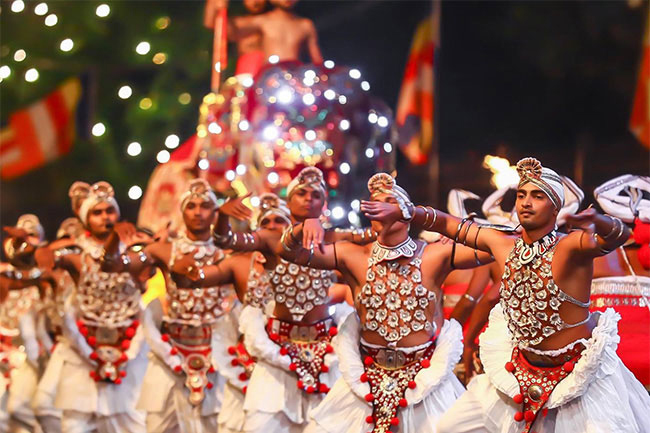
Esala Perahera is one of the grandest and most significant Buddhist festivals in Sri Lanka, held annually in the city of Kandy. This festival, which usually takes place in July or August, is a spectacular pageant featuring a series of parades and processions that last for about ten days.
Here are some key aspects of Esala Perahera:
Historical Background
- Origins: The Esala Perahera dates back to the 4th century AD. It is believed to have originated as a religious ceremony to honor the sacred tooth relic of the Buddha, which is housed in the Temple of the Tooth (Sri Dalada Maligawa) in Kandy.
- Royal Patronage: Historically, the festival was held under the patronage of the kings of Kandy. It symbolized the merging of Buddhist and Hindu traditions and included rituals to invoke rain for the agricultural season.
The Processions
- The Tooth Relic: The highlight of the festival is the procession of the sacred tooth relic, which is carried in a golden casket atop a richly decorated elephant. This casket, however, does not contain the actual tooth relic during the parade.
- Kumbal Perahera: The first five nights feature the Kumbal Perahera, which is a relatively smaller procession. This serves as a prelude to the grander events that follow.
- Randoli Perahera: The final five nights feature the Randoli Perahera, which is much larger and more elaborate. Each night the procession grows in grandeur.
Participants
- Elephants: Elephants play a significant role in the procession, adorned with elaborate costumes and lights. The lead elephant, known as the Maligawa Tusker, carries the tooth relic casket.
- Dancers and Drummers: Traditional Kandyan dancers, drummers, whip-crackers, fire-dancers, and other performers are integral parts of the parade, showcasing Sri Lanka’s rich cultural heritage.
- Torch Bearers: The processions are lit by torchbearers, adding a dramatic and mystical element to the night-time festivities.
Rituals and Ceremonies
- Kap Situweema: The festival begins with the planting of a sanctified young jackfruit tree (kap) in the premises of the four devales (shrines) dedicated to the four guardian gods: Natha, Vishnu, Kataragama, and Pattini.
- Water Cutting Ceremony (Diya Kepeema): The festival concludes with the water cutting ceremony at the Mahaweli River at Getambe. This ritual symbolizes the purification of the relic and ensures a good harvest.
Cultural Significance
- Religious Devotion: Esala Perahera is a deeply religious event for Buddhists in Sri Lanka and draws thousands of devotees who seek blessings and pay homage to the Buddha’s relic.
- Tourist Attraction: The festival attracts numerous tourists from around the world, who come to witness this magnificent display of culture, religion, and tradition.
Preservation and Modern Influence
- Heritage: Esala Perahera is considered an essential part of Sri Lanka’s intangible cultural heritage and efforts are made to preserve its traditional aspects.
- Modern Challenges: While the festival retains its ancient rituals and significance, it also faces modern challenges, including animal rights concerns regarding the use of elephants in the parades.
Esala Perahera remains a vibrant and integral part of Sri Lankan culture, reflecting the country’s historical reverence for Buddhism and its rich tradition of pageantry and celebration.
